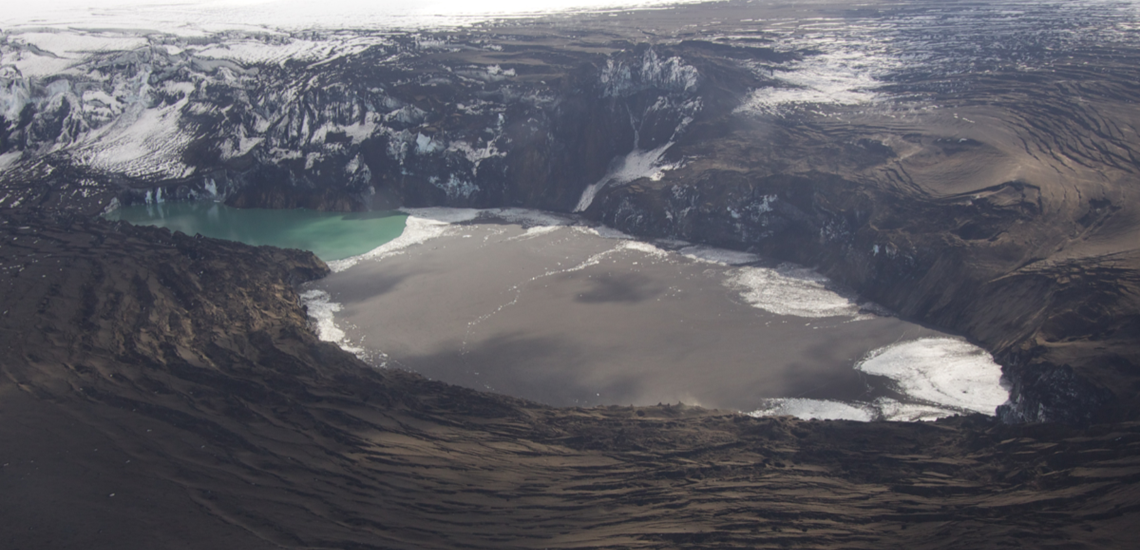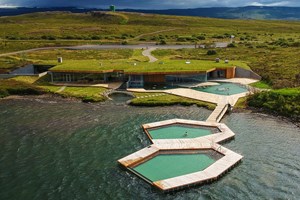Grímsvötn
Grímsvötn volcano and the Grímsfjall mountain (1725 m high) are located south from the center of the Vatnajökull glacier. There is a lot of geothermal heat there so the glacier is melting constantly and the melting water gathers up in the crater. When the water level has reached a certain level it breaks out of the crater subglacial and down to Skeiðarárjökull glacier and Skeiðarársandur floodplain. Though the water is inside the glacier it never freezes because of the geothermal heat and activity.

Photo from Wikipedia
Grímsvötn have been the most active volcano in Iceland since the settlement time and for the last decades it has been erupting about every 10 years, in 1998 and 2004 and the last eruption in 2011. The volcanic eruption in Grimsvötn in 2011 was very big and the biggest one in the volcano for the past 100 years. The ash plume went up to around 20 km high and it was 10 times bigger than the eruption in the year 2004. The eruption lasted only for five days but it had a quite lot of effect on the air traffic in Europe, but not nearly as much as the Eyjafjallajökull volcanic eruption in the year 2010.
Folklore
The name Grímsvötn and Grímsfjall comes from an folklore. It says that the troll Grímur who was an outlaw went to a fortune teller after getting in trouble with the laws. She told him to go to the mountains and stay there, so he went there but when he came there was another troll living there with his daughter. In the end Grímur killed the troll and married his daughter and from that time the mountain has been called Grimsfjall and the volcano Grímsvötn.
Grímsvötn volcanic eruptions from 1900: 1902, 1922, 1933, 1934, 1938, 1945, 1954, 1983, 1996, 1998, 2004 and 2011.
